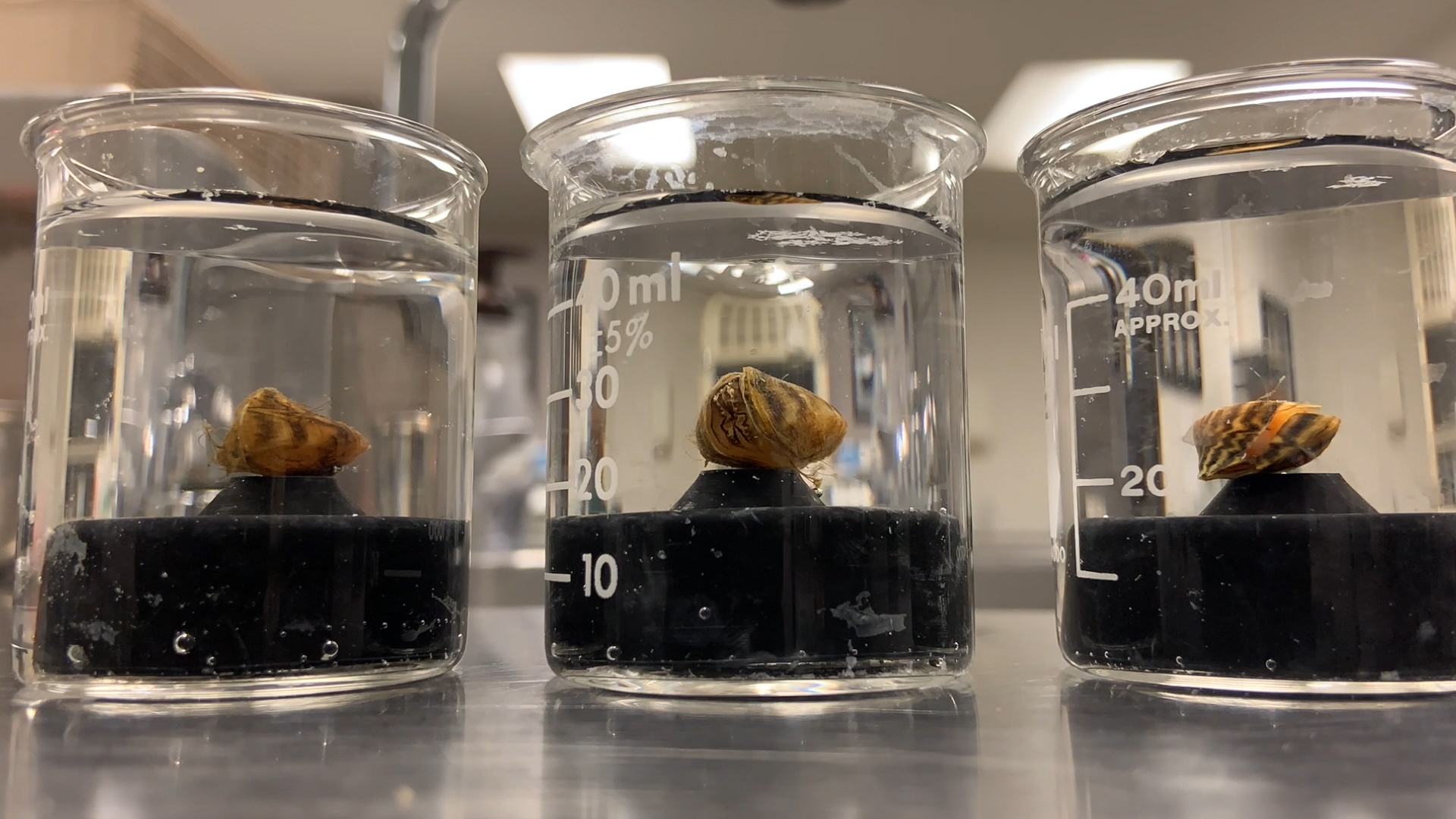
Researchers are developing RNA interference (RNAi)-based biocontrol methods to specifically target and inhibit invasive zebra mussels, aiming to protect native mussel populations and mitigate the impact on military operations and freshwater ecosystems.
Zebra mussels (Dreissena polymorpha) are highly invasive in freshwater ecosystems and can encumber military operations by encrusting underwater infrastructure and clogging pipes. They also spread easily among water bodies and therefore require enhanced biosecurity actions that take time, are expensive, and may slow military operations. Additionally, zebra mussels impact the health, reproduction, and recruitment of native mussels by attaching to their shells. This detrimental activity is causing severe declines in already threatened native mussel populations, many of which are likely managed for on U.S. Department of Defense (DOD) lands.
Eradication efforts using copper sulfate or other chemical methods are often unsuccessful, and chemical controls generally lack specificity and impact many other species. To address the need for effective and specific inhibition of zebra mussels, MAISRC researchers are working to develop RNA interference (RNAi)-based biocontrol. This project aims to establish a proof-of-concept that RNAi techniques can alter expression of essential genes in invasive zebra mussels to ultimately control zebra mussels with high specificity. The work will establish primary cell culture models for zebra mussels, identify target gene sequences and microbial delivery vectors that are best suited for zebra mussel biocontrol, establish quantitative molecular and phenotypic assays for testing RNAi efficacy in isolated cells and in live mussels, define dosing and vector production requirements, and screen for off-target effects on native freshwater mussel species and other invertebrates. Apart from the benefits of specific biocontrol of zebra mussels, RNAi technology has the potential to become an effective, species-specific tool to manage invasive species more broadly.
